The Last Shangrila
11 Nights/ 12 Days in Bhutan
Welcome to Kingdom of Bhutan:
The Kingdom of Bhutan is a tranquil country where you can explore the ancient cultures, beautiful landscapes and magnificent architecture. Located in the high Himalayas, Bhutan is a landlocked, Buddhist kingdom that is well-known for its dramatic, mountainous landscapes, beautiful monasteries, and rich cultural traditions, Bhutan is filled with tangible examples of its extraordinary culture, from the striking architecture of its mountain forts and monasteries to the images of Buddhist religious figures painted or carved onto the craggy cliffs.
Outlined Itinerary
|
Day 1: Arrive Paro & Transfer to Thimphu
The flight to Paro is one of the most spectacular in entire Himalayas. Flying along the Himalayan the journey offers fascinating views and an exciting descent in Kingdom. The flight into Bhutan takes you close to the great Himalaya, offering dazzling scenic views of some of the world’s highest glacial peaks.
As you exit Paro airport, you will be met by your guide and chauffeured to your hotel in Thimphu (1 hour drive). The capital of the Bhutan, Thimphu is a unique city with unusual mixture of modern development alongside ancient traditions. Situated at 7656 ft. above sea level, with the population of over 100,000 it is perhaps, the only national capital city in the world to not have any traffic lights.
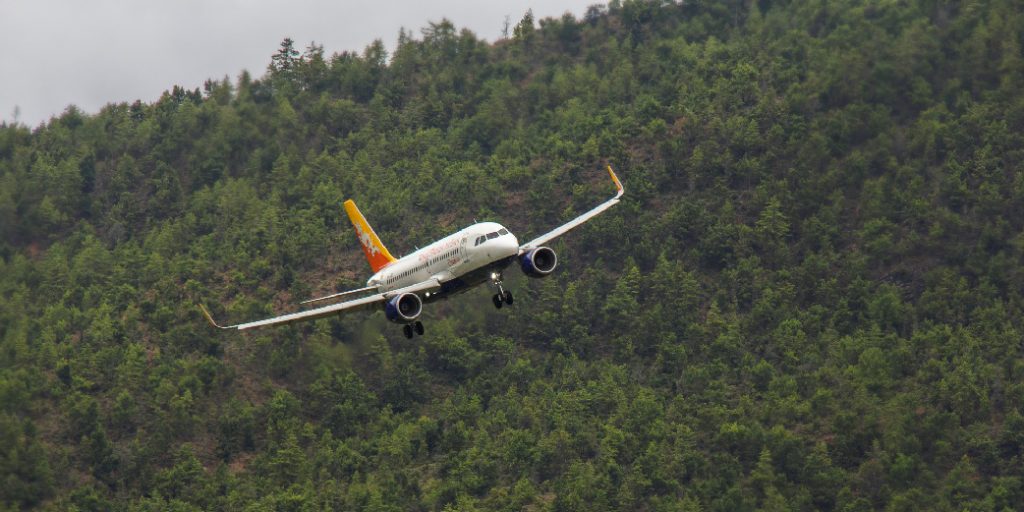
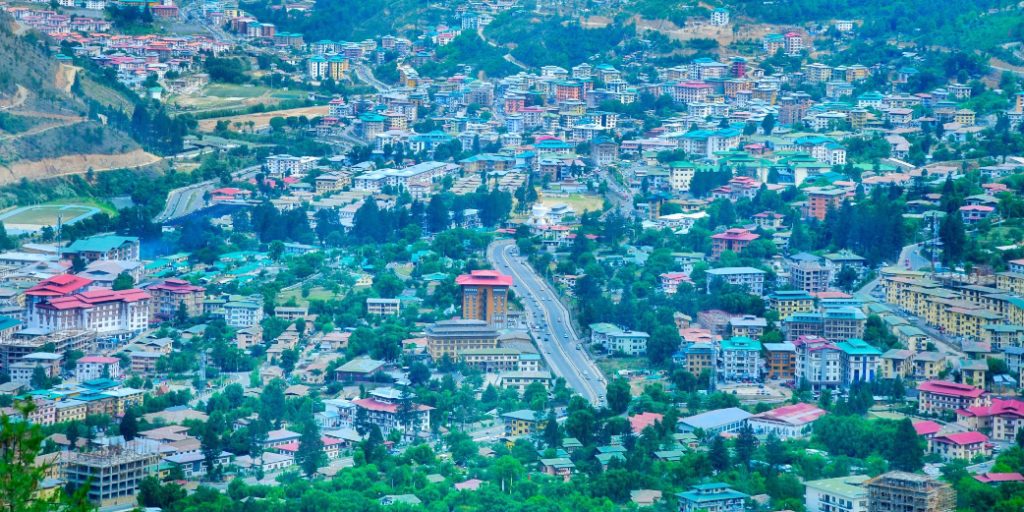
En-route stop to visit the Tamchog Lhakhang; built by Thangtong Gyalpo, a pioneering engineer who introduced the construction of suspension bridges into Bhutan and Tibet. It is believed that more than 58 bridges were built across the country however only 2 have survived. One of these bridges still stands strong at the base of the Tamchog Lhakhang. Marvel at the iron bridge reconstructed using original chain links.
Drive onwards to your hotel for check in and a short rest.
Post lunch, you will visit the National Memorial Chorten. The stupa built in the memory of Bhutan’s third King, His Late Majesty, King Jigme Dorji Wangchuk, who is popularly regarded as Father of modern Bhutan. The paintings and statues inside the monument provide a deep insight into Buddhist philosophy.
Followed by drive to visit the Royal Takin Preserve is a protected area where the national animal of Bhutan, Takin, is preserved. The Royal Takin Preserve is located just 10 minutes away from Thimphu city. Originally a zoo, the fourth king decided to disband it since keeping animals in cages did not align with Bhutan’s environmental and religious beliefs. The animals were released into the wild, however the takin were too tame to survive, and wandered around the streets of Thimphu. This led to the making of the Royal Takin Preserve. Now the animals are kept in a large enclosure where visitors can observe them.
Spend overnight at Hotel in Thimphu.
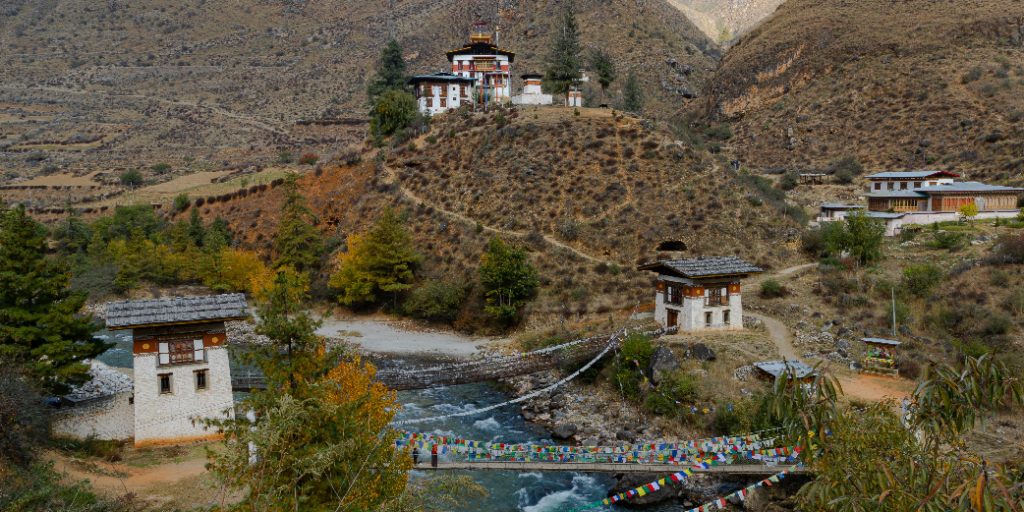
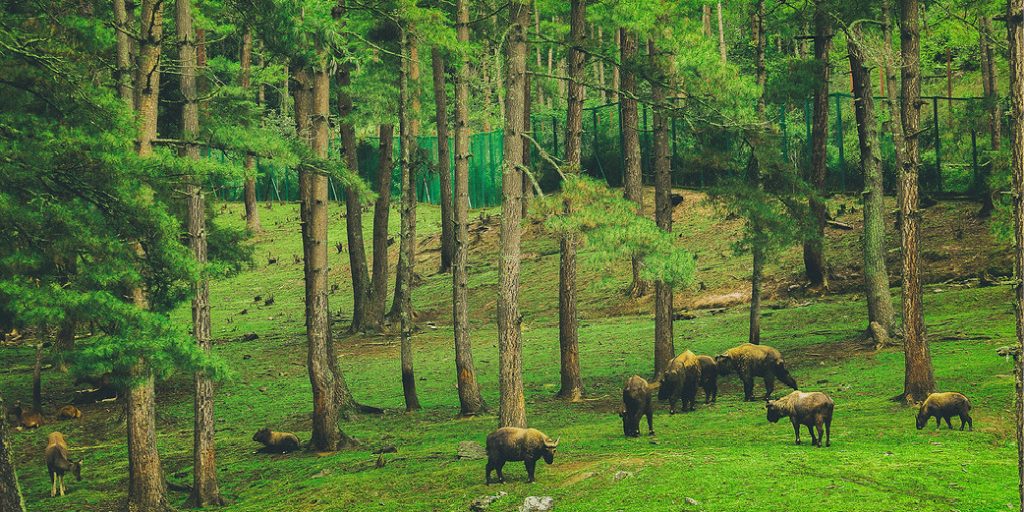
Day 2: In Thimphu
Post breakfast, you will drive to Buddha Dordenma – a gigantic Shakyamuni Buddha statue is filled with over 100,000 smaller Buddha statues, each like the Buddha Dordenma itself, made of bronze and gilded in gold. The statue fulfils an ancient prophecy dating back to the 8th century CE, discovered by Terton Pema Lingpa, the Religious Treasure Discoverer of the time. It is said to bring peace and happiness to the entire world.
From here, you will hike on a trail that will take you through a beautiful forest patch towards Changangkha Lhakhang. The hike provides magnificent views of the Thimphu valley below. This trail is often used by His Majesty the fourth king as his mountain biking trail.
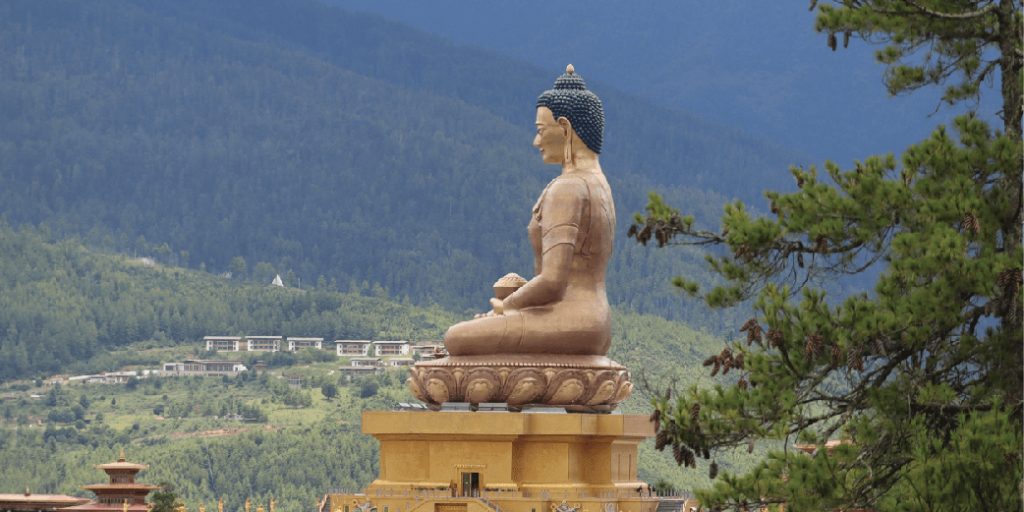
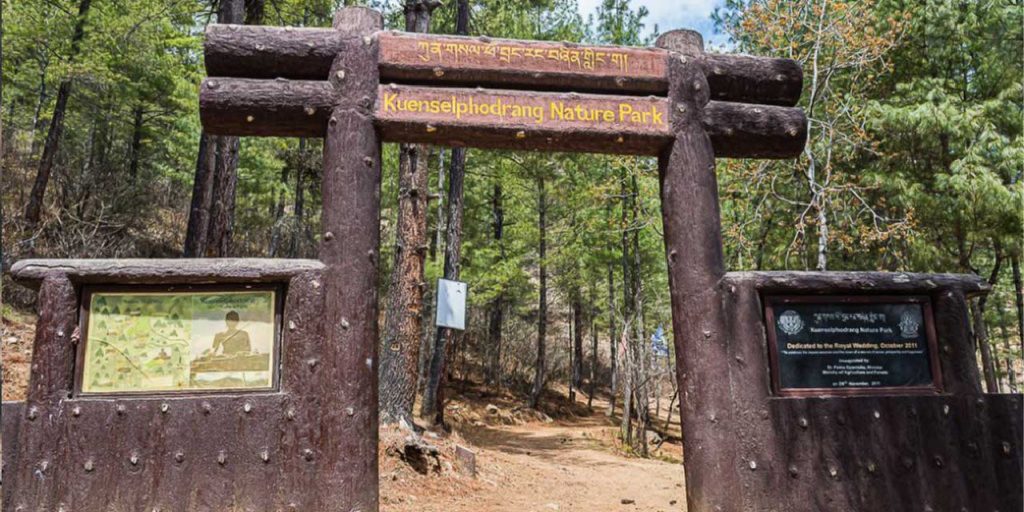
Return to the hotel for lunch.
Post lunch, you will visit the National Institute for Zorig Chusu, commonly known as Arts & Crafts School or Painting School. The Institute offers a six year course on the 13 Traditional Arts and Crats of Bhutan. On a visit, can enjoy looking at the unique arts and crafts of Bhutan that have symbolic meaning to the country. You can witness the impressive skill and discipline young students showcase.
Next, visit the Royal Textile Academy. Weaving is an integral part of the culture and tradition of Bhutan. With the aim to conserve, restore, and document this living art, the Royal Textile Academy of Bhutan was set up by the queen mother, Her Majesty Ashi Sangay Choden Wangchuck as a non-government, non-profit, organization. Inaugurated in 2001, the academy is also a national centre for educating young students in textiles, fabric design and museum studies. It serves as a centre for tourists, introducing the nation’s masterpieces to its visitors, while preserving Bhutan’s weaving traditions.
Followed by a visit to Tashichho Dzong, also known as “Fortress of the Glorious Religion”, an impressive large structure, surrounded by well-maintained lawns and beautiful gardens. Completed in 1641, this magnificent fortress contains the main secretariat building, which houses the throne room of His Majesty, the King of Bhutan. The Dzong also functions as a summer residence for the central monastic body.
Later in the evening, you will stroll around the Authentic Bhutanese Craft Bazaar which is located right next to Norzin Lam. It is an excellent venue to get a peek of Bhutanese art and craft.
Then continue to walk towards Kaja Throm which is a farmer’s market. While strolling around the market, you will get a chance of knowing best of what locals have to offer to visitors.
Spend overnight at Hotel in Thimphu.
Day 3: Thimphu to Punakha
This morning, you will drive to Punakha (3 hours’ drive) across Dochu La Pass (3,080 m). Dochu La Pass offers the most spectacular views of the snow-capped eastern Himalaya range in the winter along its path, linking the city of Thimphu and Punakha. Visit the Druk Wangyal Lhakhang, the temple build in honour of Wangchuck Dynasty and for the 60th Birth Anniversary of Fourth King of Bhutan.
Stop on Dochu La to visit the 108 stupas to honor the fallen Bhutanese soldiers.
Before reaching Punakha, stop en route and hike to Chimi Lhakhang. Perched on a hill in the centre of the valley, Chimi Lhakhang is a temple dedicated to Lama Drukpa Kuenley. Also known as the ‘Divine Madman’. Chimi Lhakhang is widely known as the temple of fertility; locals come here to receive blessings from the lama. They pray and ask to be blessed with a child. Locals also bring their newborns to be named here. The lhakhang is about a 30-minute walk through fields from the main road.
Afterwards, drive to hotel check in and lunch.
Later in the afternoon, drive to visit the Punakha dzong. Constructed in 1637, this was the second dzong to be built in Bhutan, and for many years served as its seat of government. Widely referred to as the most beautiful dzong in the country, the towering white walls form a lovely contrast to the surrounding greens and blues. It is the winter residence of the central monastic body, and holds a very important relic over which many wars were fought with the Tibetans. All of Bhutan’s kings are crowned here before they can take their throne in Thimphu. The dzong’s magnificence is especially striking in the spring when the lilac-coloured jacaranda trees are in full bloom.
Drive back to hotel for restful evening.
Spend overnight at Hotel in Punakha.
Day 4: In Punakha
Early this morning, you will begin your hike to the Khamsum Yuelley Namgyal Chorten, which sits majestically on above Punakha valley with an amazing view of the countryside and the hills below. It was built by the Queen Mother to ward off evil forces and bring peace and harmony for all living beings. It is one of the finest examples of Bhutanese architecture. Built for the protection of the country and the present King.
After your hike, you will hike back to hotel for a short rest.
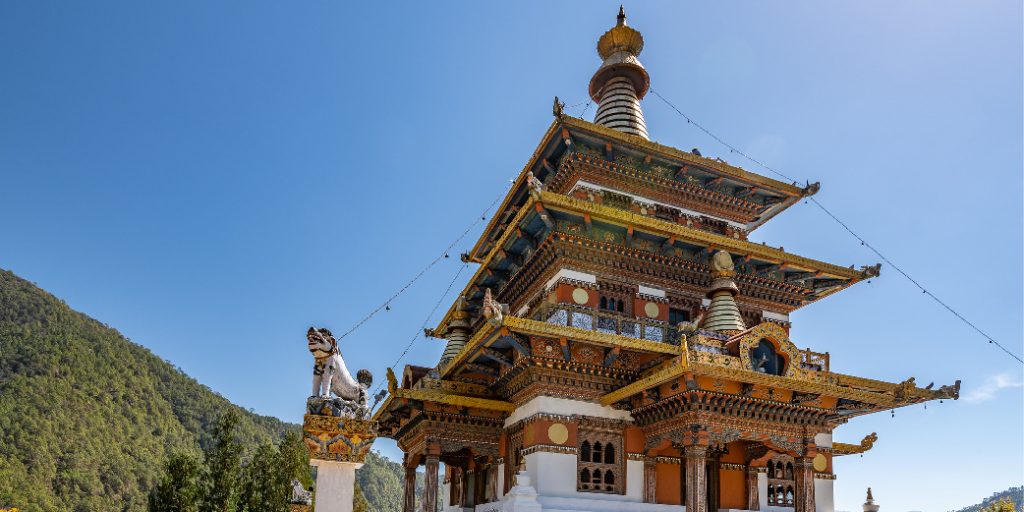

Afternoon, drive to visit the Sangchhen Dorji Lhuendrup Lhakhang Nunnery. Perched on a ridge overlooking Toebesa, Punakha and Wangduephodrang valleys. The temple houses a 14-foot main bronze statue of Avalokiteshvara (Chenrigzig chagtong chentong). Other statues include those of Guru Padmasambawa, Gautama Buddha, Zhabdrung Ngawang Namgyel, Tsela Namsum, the 21 Taras and Tsepamay (Buddha of longevity). The complex also houses a permanent higher learning and meditation centre for nuns where, apart from religious trainings, it provides life skill training such as tailoring, embroidery, statue making and thangka painting.
Followed by a visit to Kaja Throm (farmer’s market).
Drive back to hotel for restful evening.
Spend overnight at Hotel in Punakha.
Day 5: Punakha to Phobjikha
This morning, you will be transferred to Phobjikha (3 hours’ drive).
Crossing Wangdue, the road once again gradually climbs to Lawa La pass, which offers the magnificent view of Mount Jhomolhari (24,035 feet/7,326 metres) and Mount Jichu Drake (21,856 feet/6,662 metres). There is an abrupt change in vegetation as we drive, with mountain forest replaced by high altitude dwarf bamboo.
The Phobjikha valley is a U-shaped glacial valley. It serves as a winter home to a group of globally endangered black-necked cranes that migrate every winter from the Tibetan plateau. This crucible of beauty is on the western slopes of the Black Mountains, bordering the Jigme Singye Wangchuck National Park. Some people refer to the entire region as Gangtey, which is well known for its magnificent nature trails. Gangtey also has its own monastery, perched at the head of the valley.
On reaching Phobjikha, check in to the hotel. Soak in the beautiful views of the Gangtey valley and relax over lunch.

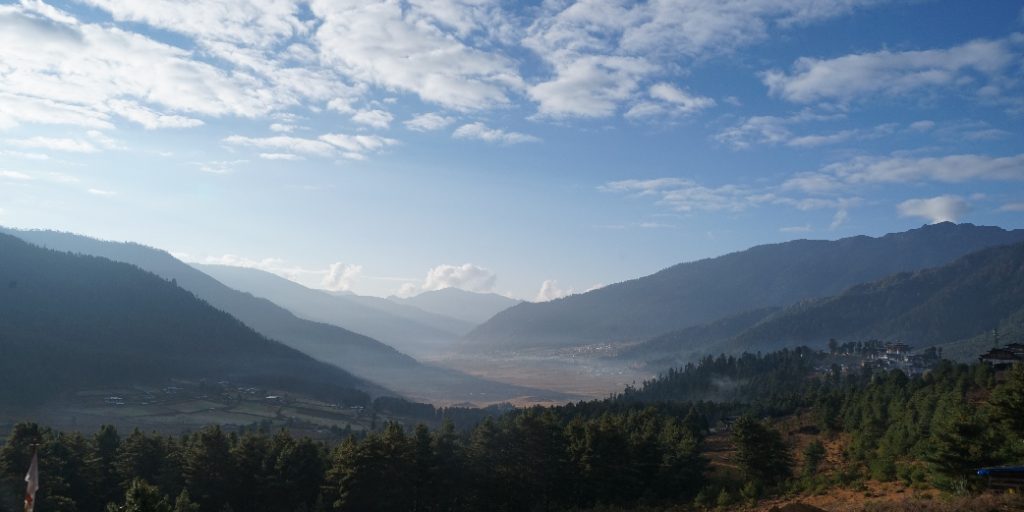
Later in the afternoon, you will pay a visit to the Gangtey Goemba (monastery), located atop a hill at an altitude of 2800 m, offering a stunning view of Phobjikha valley. In 1613, the grandson and reincarnation of Pema Lingpa, Pema Thinley founded the Nyingma temple here, which has grown into today’s Gangtey Goemba. It serves as the seat of the ninth reincarnation of the body of the Terton (treasure discoverer) Pema Lingpa.
Then you will walk along the Gangtey Nature Trail, a beautiful nature walk along the Black Necked Crane roosting area with the view of lower Phobjikha valley. It is also the most beautiful and shortest of the existing nature trails in Bhutan. You will start the hike from the Mani stone wall stupa to the north of Gangtey Gompa. The trail will end in the village of Khewang as you cross the Nake Chu. The hike takes about 1hr 30minutes through the pine forest and small bamboo shrubs.
Spend overnight at Hotel in Phobjikha.
Day 6: In Phobjikha
Post breakfast, you will go on the Longteng hike. The path will lead through bush bamboo towards a small cluster of village houses. There are beautifully colored rhododendron forests on both sides of the valley, and in the winter months, yaks graze in the area. We climb up gradually through the thickets of dwarf bamboos, birch, rhododendron, hemlock and fir to Kayche La, marked with some prayer flags. After the pass you continue downward towards the idyllic Kumbu village.
The hike will take about four hours and you will be back at your hotel by lunch time.
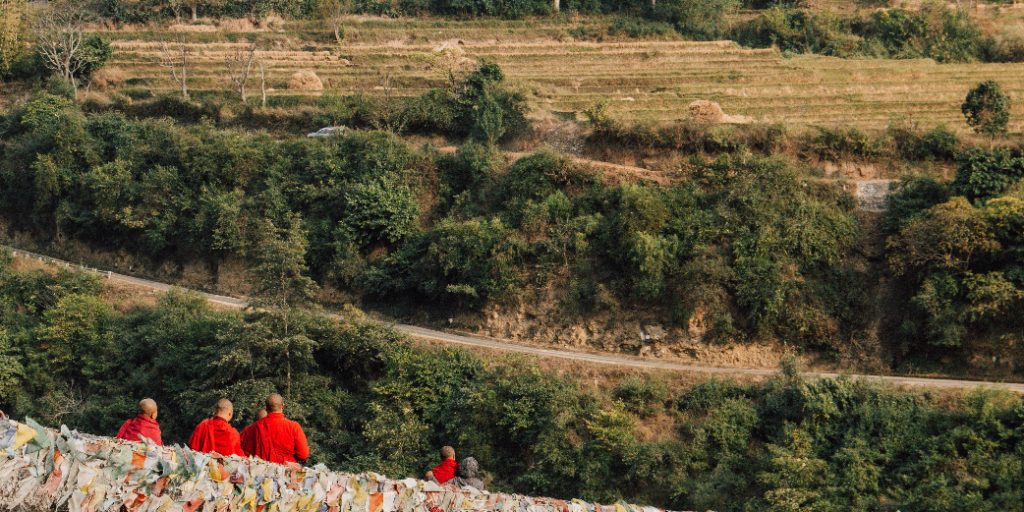
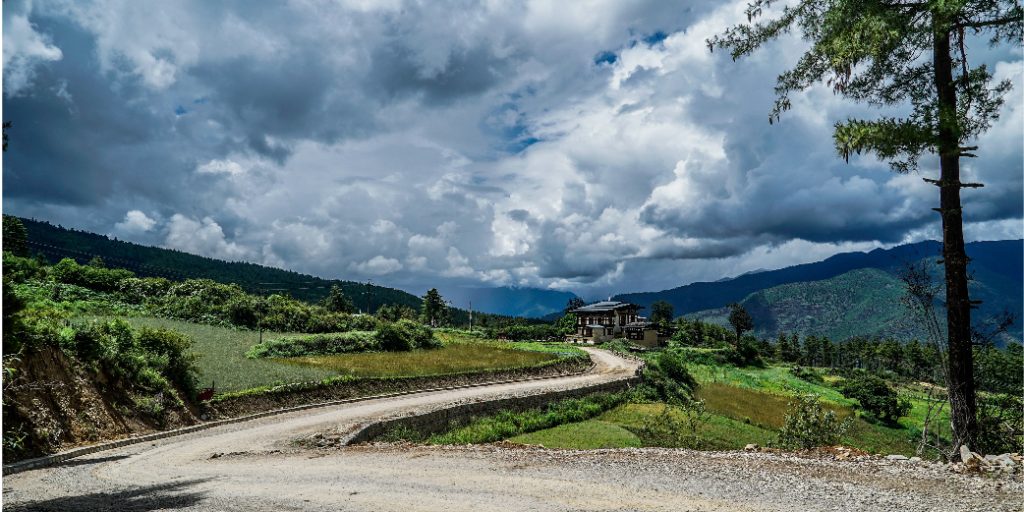
Later in the afternoon, visit the Black-necked Crane Education Centre. Situated on the edge of the forest and wetland along the main road of Phobjikha valley. The centre has an observation room equipped with a high power telescope and spotting scopes for catching the best view of the cranes.
In the evening head towards the Shedra which is a monastic school. You will attend the evening prayer where about 300 monks chant every evening followed by a medidation.
Spend overnight at Hotel in Phobjikha.
Day 7: Phobjikha to Bumthang
Today after breakfast, you will drive to Bumthang (5-6 hours’ drive).
Bumthang Dzongkhag (district) spans from 2600 – 4500 m encompassing four major valleys. The Ura, Chumey, Tang and Choekhor valleys are broad and gentle, largely scenic and quite the sight for travellers to visit. Bumthang is the religious heartland of Bhutan and home to many of the oldest and most sacred monasteries. In addition to being rich in historical and spiritual legacy, it is also an important agricultural area. The valleys are full of buckwheat, rice, potato, apple and dairy farms. This district has the only airport in central Bhutan.
En route stop for lunch at the Chendebji Chorten and visit Trongsa Dzong. Built in 1648, it was the seat of power over central and eastern Bhutan. Both the first and second kings of Bhutan ruled the country from this ancient seat. All four kings were invested as Trongsa Penlop (“governor”) prior to ascending to the throne. The dzong is a massive structure with many levels, sloping down the contours of the ridge on which it is built. Due to the dzong’s highly strategic position, on the only connecting route between east and west, the Trongsa Penlop was able to control effectively the whole of the central and eastern regions of the country from here.
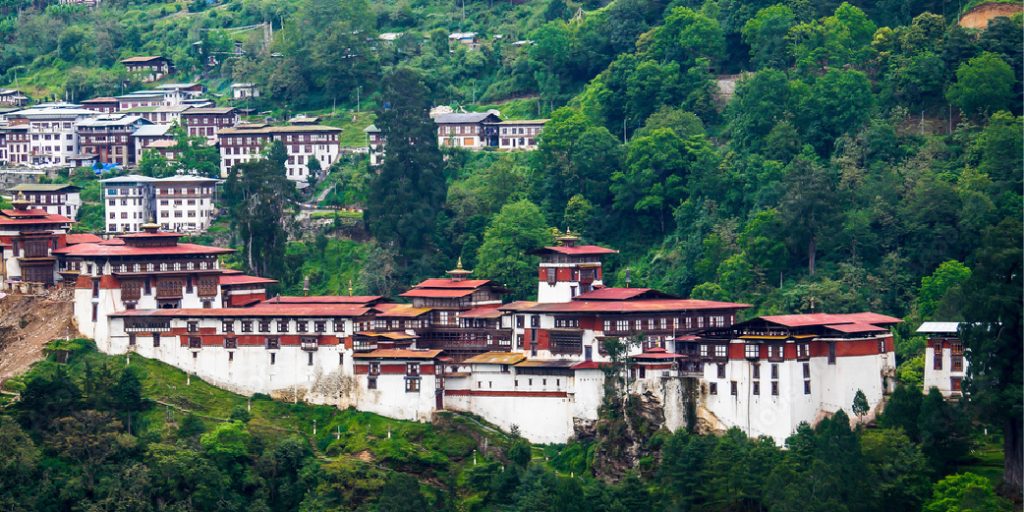
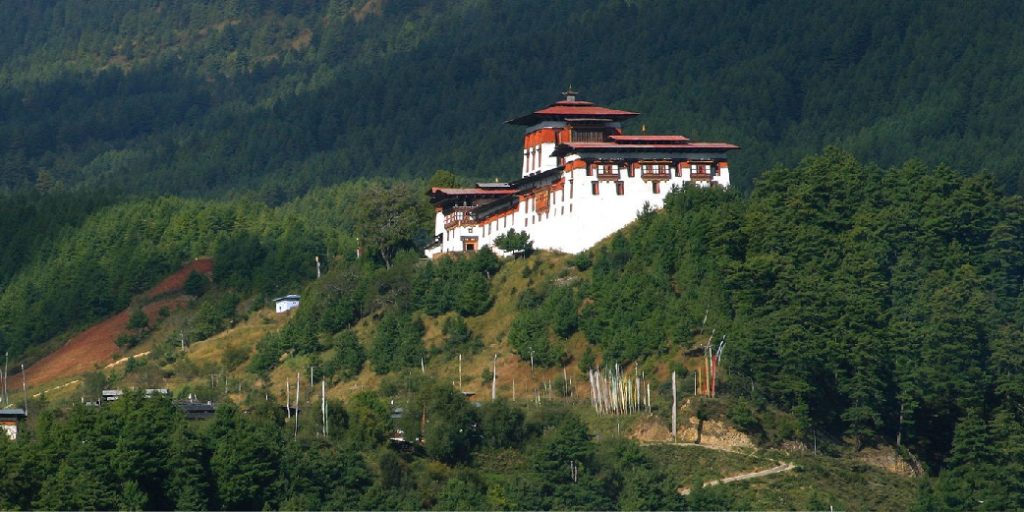
Later on the way, stop by to visit the Yathra weaving centre. The Yathra Weaving Centre in the village Zungney in Chumey is the main sales outlet in Bumthang who depend on the sale of traditional yathra for their livelihood. The weavers use yak and sheep wool to create a thick fabric which is ideal for the cold weather of Bumthang.
On reaching Bumthang, check into the hotel and rest.
In the evening walk around in Chamkhar town and interact with locals.
Spend overnight at Hotel in Bumthang.
Day 8: In Bumthang
After breakfast walk to Jambay Lhakhang. It is said to be one of the 108 temples built by Tibetan king Songtsen Gampo in 7th century on a single day to subdue the demoness that was residing in the Himalayas. It was divined that the supine demoness was causing obstruction to the spread of Buddhism and the temples were constructed on her body parts that spread across the Tibet. Jambay Lhakhang holds down the left knee and Kyichu Lhakhang in Paro pins down the left foot. Famous for Ter Cham, a cultural dance which takes place every year in October. This temple was originally built in 659 CE.
Afterwards walk further to visit Kurje Lhakhang. Named after the body (kur) print (je) of Guru Rinpoche, this temple is where the first seeds of Vajrayana Buddhism were sowed in Bhutan in the 8th century. It comprises three separate temples, Guru Lhakhang, Sangay Lhakhang and Sampa Lhundrup Lhakhang, which were all built at separate times, the earliest being in 1652. Within Sangay Lhakhang, which one enters gets to by crawling through a small rock passage (The Bhutanese believe the act of crawling through a narrow tunnel you is believed to leave your sins behind by the Bhutanese) lies the meditation cave, where Guru Rinpoche left his body imprint. The Sampa Lhundrup Lhakhang was built in 1900 by Ugyen Wangchuk, the first king of Bhutan, when he was still penlop of Trongsa.
Later in the afternoon, drive back to your hotel for lunch and a short rest.
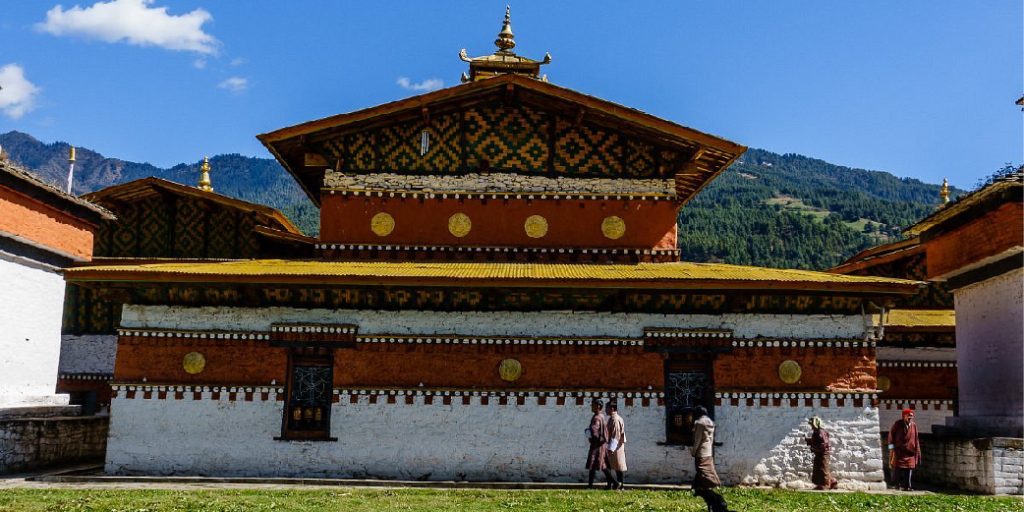
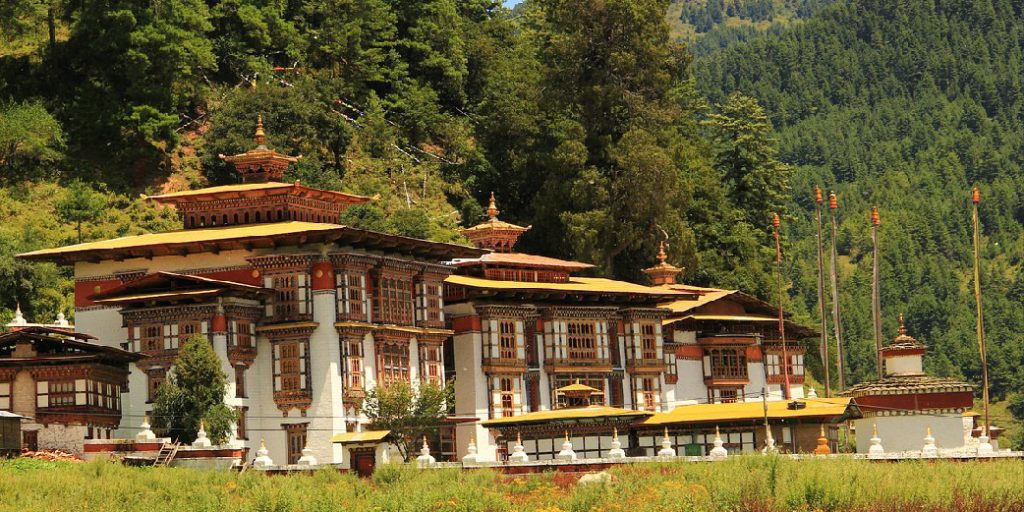
Post lunch, drive to visit the Jakar Dzong the “Castle of the White Bird” dominates the Chamkhar valley and overlooks the town. Constructed in 1549, by the Tibetan Lam Nagi Wangchuk, the Dzong played an important role as the fortress of defence of the whole eastern Dzongkhags. It also became the seat of the first king of Bhutan. A special feature of the Dzong is the approximately fifty meters high Utse or the Central tower, which is distinct from most other Dzongs in Bhutan. The other unique feature of the Dzong is a sheltered passage, with two parallel walls, interconnected by fortified towers, which gave the population of the fortress access to water in the case of a siege.
Followed by a visit to Red Panda Brewery and Cheese Factory. There is some truth about resembling Switzerland. You could feel it when you finally taste the cheese, let it melt in your mouth for a moment and inhale pure mountain air gulping a freshly brewed Weiss beer made of original local wheat. Situated right next to each other in Bumthang, Red Panda Brewery and Cheese Factory are quite interesting to visit.
Later drive back to hotel for a restful evening.
Spend overnight at Hotel in Bumthang.
Day 9: In Bumthang
Early morning after breakfast, drive towards Tang Valley enroute stopping by the Mebar Tsho (The Burning Lake).
A five-minute walk from the road leads to a glittering pool in the Tang River called Mebar Tsho, which translates into burning lake. In this lake, Terton Pema Lingpa, the reincarnation of Padmasambhava, was said to have discovered religious treasure in the 12th century. Mebar Tsho is less a lake and more a gorge in one of the many glistening rivers that run through Tang valley. This sacred lake is visited by many Bhutanese during auspicious days to offer butter lamps. With an extensive array of prayer flags blowing in the wind, it is known to be one of the holiest places for Buddhist pilgrimage.
Drive further to one of the remotest of Bumthang’s valleys, Tang valley and stop at Ugyencholling Palace, which was built in the 16th century, and later renovated. Today the palace functions as a museum to preserve its legacy and provide a place for religious studies, research and solitude. The fascination and well-captioned exhibits offer real insights into the lifestyle of a Bhutanese noble family. The highlights include a book of divination, a dakini dance costume made of bone and the revelation that petrified yak dung was one of the ingredients for Bhutanese gunpowder. The museum is a 45-minute walk uphill to the hilltop.
You can have your lunch at the farmhouse.
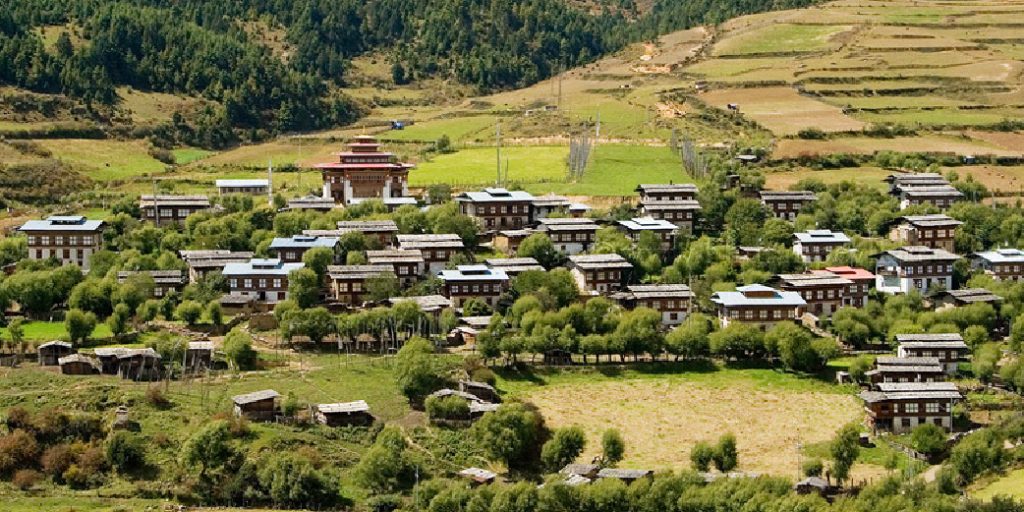
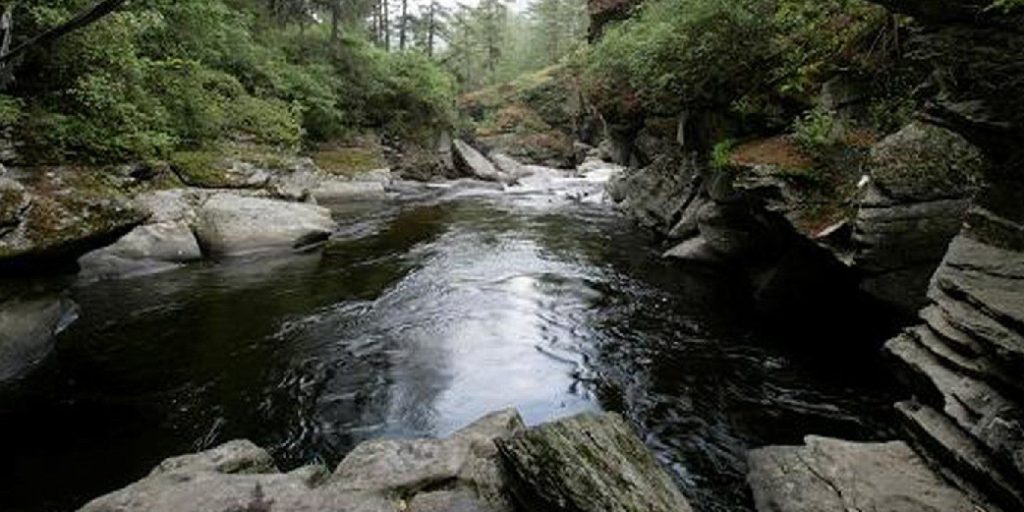
Later after lunch, drive until the village of Bebzur, which is the starting point of your hike commonly known as the Bushman Trail. You will need to hike up for about 45 minutes, after which you can enjoy a pleasant and easy stroll through pine forests all the way until Kharchu Dratshang. You’ll catch great views of the Pemacholling nunnery and Zangdopelri. Near the end of the hike, you’ll eventually come across a large meadow, where cows are grazing on lush green pastures. These are the very cows from which Bumthang’s famous cheese, chugo, comes from. You will be chauffeured from Kharchu Dratshang back to your hotel. The entire hike will take about four hours.
Spend overnight at Hotel in Bumthang.
Day 10: Bumthang to Paro (By Domestic flight)
Today after breakfast, you will fly to Paro.
Paro is a historic town, situated at 7382 ft. with many sacred sites and historical buildings scattered through the area. It is home to many of Bhutan’s oldest temples and monasteries, the National Museum and the country’s only airport. Mt Jhomolhari (7326 m /24035 ft) reigns in its white glory at the northern end of the valley. The city is known to be situated at the height of about 2280 metres on the banks of Paro Chu river, which is spread across an area of 1259 sq.m. The Paro Chhu river is the lifeline of Paro, adding a glorious touch to it.


On arrival, check-in to your hotel and lunch.
Post lunch visit the Ta Dzong; a watch tower built to defend Rinpung Dzong during the inter-valley wars of the 17th century. Since 1967, the Ta Dzong has been serving as the National Museum of the country. It holds a fascinating collection of art, relics, religious thangka paintings, natural history, and Bhutan’s exquisite postage stamps. The building’s circular shape comes from its defensive origin.
Followed by a short drive to visit Rinpung Dzong, meaning (“fortress of the heap of jewels”), which has a long and fascinating history. Along the wooden galleries lining the inner courtyard are fine wall paintings illustrating Buddhist lore such as fouer friends, the old man of long life, the wheel of life, scenes from the life of Milarepa, Mounts. Sumeru and another cosmic Mandala.
Evening you can stroll around the Paro town.
Spend overnight at Hotel in Paro.
Day 11: In Paro
This morning, drive to Ramthankha, and start your hike to the Taktsang monastery (Tiger’s Nest), one of the most prominent Buddhist sites in Bhutan. The trail climbs through a beautiful pine forest, many of the trees festooned with Spanish moss and an occasional grove of fluttering prayer flags. It is said that Guru Rinpoche, founder of Buddhism in Bhutan flew from eastern Bhutan on a tigress, bringing Buddhist teachings and meditation here on this cliff. This site has been recognized as a most sacred of all Buddhist sights around the world. This hike takes about five hours with a 900 m (2952 ft) approximate gain in altitude.
Afterwards hike down to the car park before returning to the hotel.
On your way back to hotel, visit the 7th century Kyichu Lhakhang, one of the 108 temples built in the Himalayas by Buddhist King, Songtsen Gampo. The building of this temple marks the introduction of Buddhism in Bhutan.

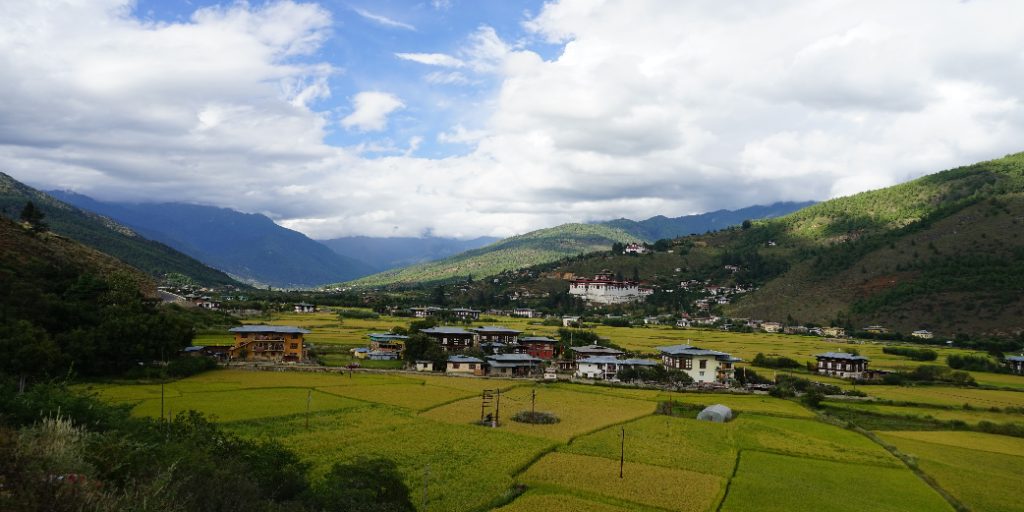
Spend overnight at Hotel in Paro.
Day 12: Paro/ Departure
This morning drive to Paro airport to board your flight to onward destination.

